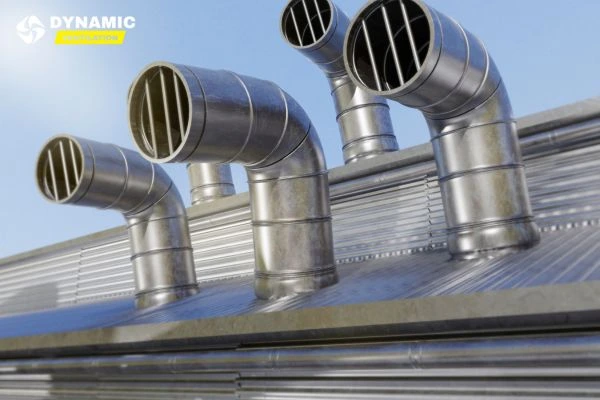
Smart Vent Roof: The Future of Airflow Management
In today’s world, where energy efficiency, sustainability, and indoor air quality are top priorities, building owners and facility managers are constantly searching for smarter ways to manage airflow. Traditional ventilation methods are no longer enough to meet the growing demands of modern infrastructure. This is where smart vent roof systems are redefining how air circulation is controlled, monitored, and optimized. By integrating advanced technology with proven ventilation designs, these systems represent the future of airflow management.
What Is a Smart Vent Roof?
A smart vent roof refers to a technologically enhanced ventilation system installed on rooftops. Unlike conventional roof vents that passively allow hot or stale air to escape, smart vent systems use sensors, automation, and data-driven controls to regulate airflow. They adapt in real time to changes in temperature, humidity, and air quality.
For example, during peak summer, when heat builds up inside a warehouse or factory, the system can automatically increase exhaust to maintain comfortable indoor conditions. Similarly, during cooler nights, it can reduce energy use by optimizing airflow naturally. This balance makes smart vent roof systems an efficient and cost-effective solution for commercial and industrial spaces.
Why Businesses Are Choosing Smart Ventilation
The growing adoption of smart vent roofs is not just a trend—it is a strategic move toward long-term energy savings and sustainability. Businesses in sectors such as manufacturing, retail, hospitality, and logistics are discovering multiple advantages:
- Energy Efficiency – Automated systems reduce unnecessary fan usage, cutting down electricity bills.
- Improved Indoor Air Quality – Constant monitoring ensures pollutants, dust, and heat are effectively removed.
- Sustainability – Reduced energy consumption supports eco-friendly building certifications and green initiatives.
- Cost Savings – Lower operational costs over time make this a smart investment.
- Comfort and Safety – Optimized airflow creates safer and more comfortable environments for employees and customers.
How Smart Vent Roof Systems Work
These systems operate through a combination of:
- Sensors – Measure air quality, humidity, and temperature.
- Automated Controls – Adjust fan speeds and ventilation based on data.
- Connectivity – Systems can be monitored and controlled remotely using apps or building management software.
- Integration – They can be linked with HVAC systems for seamless climate control.
This intelligent approach ensures that the right amount of airflow is provided exactly when and where it is needed.
Applications of Smart Vent Roof Technology
Smart ventilation is suitable for a wide range of industries and facilities:
- Warehouses & Factories – To regulate temperature and remove airborne contaminants.
- Commercial Buildings – To create energy-efficient offices and retail spaces.
- Hospitality Sector – Hotels and restaurants benefit from controlled indoor air quality.
- Healthcare Facilities – Maintaining sterile and safe air circulation is critical.
- Residential Complexes – Large housing projects can also implement smart ventilation for energy savings.
In regions where climate control is especially challenging, such as the Middle East, solutions like roof vents Dubai are increasingly in demand. The addition of smart features further enhances their efficiency and reliability in extreme weather conditions.
Dynamic Ventilation: Leading the Way
Among the companies championing advanced ventilation systems, Dynamic Ventilation stands out for delivering high-performance, durable, and innovative solutions. Their expertise in designing roof-mounted fans, industrial exhaust systems, and energy-efficient ventilation makes them a trusted partner for businesses seeking reliable airflow management. By offering tailored solutions, Dynamic Ventilation helps organizations transition from conventional ventilation to smart, sustainable systems that align with modern building requirements.
The Future of Airflow Management
As businesses move toward smarter infrastructure, the adoption of smart vent roof systems will only accelerate. With the growing emphasis on green buildings, energy savings, and employee well-being, this technology is no longer optional—it’s becoming a necessity.
Looking ahead, innovations such as AI-powered airflow prediction, integration with renewable energy systems, and even self-cleaning ventilation units could become standard. These advancements will allow businesses to not only manage indoor air more effectively but also reduce their environmental footprint significantly.
Final Thoughts
Smart vent roof systems represent the next chapter in ventilation technology. By combining automation, sensors, and intelligent design, they offer a solution that balances energy efficiency, sustainability, and performance. Companies that embrace this innovation today will not only enjoy immediate benefits like cost savings and improved comfort but will also be better prepared for the future of sustainable building management.


0 comments